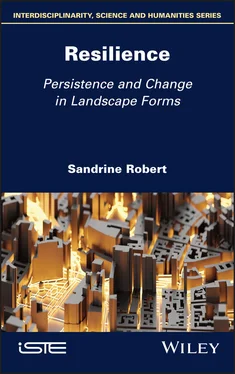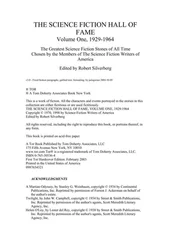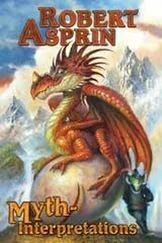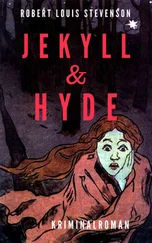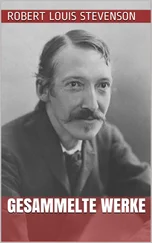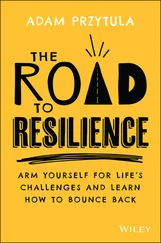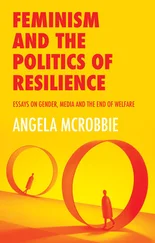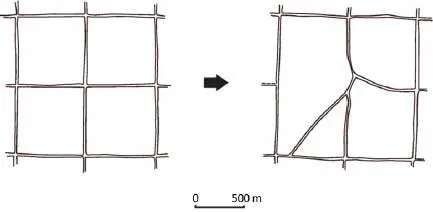
Figure 1.3. Theoretical illustration of the decay of a centuriated cadastral system (inspired by Chouquer 1983; Robert, 2020)
Until the 1980s–1990s, morphologists aimed to identify the traces of plans and parcel systems, based on a preconceived notion of the finished form which they were presumed to have in ancient and medieval times. This mother form was used as a reference for hypothetical reconstructions of missing sections on maps. In the context of the ancient world, many methods used standardized grids based on the most common dimensions of contemporary planned parcel systems, transferred onto an overlay then held up against topographical maps or aerial photographs (Chouquer 1990). For ancient urban environments, P. Pinon pioneered the use of “programmatic plans” using a unique, module-based orthogonal grid, based on current city layouts (Pinon 1994) 29 . This approach consists of looking for traces on modern maps and photographs that correspond to the grid layout. However, it leaves little room for the geographical particularities of specific sites, which may warp the grid; the grid takes priority over the actual forms of the site. Studying planned layouts in this way implies a minimization of the effects of both time and space.
1.3. Reversible time
1.3.1. Resistance to change
During the 19th century, the development of research into planned layouts in the historical sciences ran parallel to a growing interest in ancient plans and morphological analysis within the emerging field of urban design. This interest appears to have drawn on a critical approach to industrial-era town design, in which settlements expanded beyond historical limits in the form of medieval and modern walls (Choay 1965; Cohen 1993). The desire to act on the forms of towns and cities went hand-in-hand with a desire to maintain a “legacy” state, or even to recreate an initial state from a contemporary “decayed” state. Certain town planners believed that the application of a historical plan would rejuvenate, or even resurrect, a former state. In 1936, for example, P. Lavedan criticized the vitalism present in his own earlier words as it did not correspond to planned cities:
[...] historical fatalism has its roots in the assimilation of the city to a living being. A city is seen as a living thing which, like all living things, is born, grows, and dies; it is a child, an adolescent, then an old man. I myself accepted this comparison for many years, even in the first edition of this work; now, however, I find it to be unacceptable. [...] On the contrary, a city can be rejuvenated or even resurrected. While all men start out as children, many towns do not have a “childhood”, being in possession of their full strength from the outset, like Athena springing fully-formed from the mind of Zeus; the existence, or even the very notion, of these planned cities has no place in the fatalist approach. (Lavedan 1959, p. 13) 30
Among urban planners, there was an idea that certain types of town plans provided a means of combatting aging and decay. Michel Parent, museum conservator of relief plans, writing in 1948, considered that the knowledge of ancient could be seen as an “applied science of curation”:
The past can serve the future in all cases, on the condition that we do not make a tyrant of it: firstly, it highlights tried-and-tested postulates or permanent laws which are helpful in finding solutions to new problems; secondly, in specific cases, awareness of a pathological evolution of a city or district enables us to distinguish between healthy and sick parts, providing urban planners with genuine remedies. 31 (Parent 1948, p. 282)
These approaches place a particular emphasis on one time of plan: that of planned cities, considered in this case of works of art.
1.3.2. The ancient plan as a work of art
Toward the end of the 19th century, the Austrian architect Camillo Sitte, in Der Städtebau – published in English as City Planning According to Artistic Principles – emphasized the esthetic qualities of the medieval town, “rediscovered” by the Romantic movement (Sitte 1890). In Germany, Sitte’s contemporaries, the architect Joseph Stübben and the art historian Albert Erich Brinckmann, highlighted the interest of studying ancient city plans in order to identify models of successful urban arrangements (Stübben 1890; Brinckmann 1908). In England, Raymond Unwin demonstrated that ancient urban forms provided a valuable source of models for town development (Unwin 1981). In 1926, Lavedan aimed to lay scientific foundations for this approach in his seminal essay Qu’est-ce que l’urbanisme . The publication was accompanied by a selection of ancient, medieval and modern plans; the way in which certain forms, such as the checkerboard, appeared again and again was seen to be particularly notable (Lavedan 1926a, 1926b, 1941). This approach, labeled “culturalist” by the architectural historian Françoise Choay (1965), emphasized ancient city layouts with a certain esthetic value, giving them the potential to be used as models in developing an art of urban design.
In order to establish his history of urban architecture as a science, Lavedan needed to define a position for it among all of the other disciplines for which the town was an object of interest in the early 20th century (geography, sociology, economics, history, etc.). He chose to focus on one aspect of urban studies which, in his view, had been largely ignored in other disciplines: the notion of the plan from the perspective of material elements (road traces, arrangement and specialization of different districts, design of public squares and parks). However, given the proximity of this approach to geography, Lavedan chose to focus only on urban plans with a certain esthetic value, considered from an artistic perspective, in order to “establish, with respect to related disciplines, the possibility of an independent discipline in the history of urban architecture, written from a purely artistic and esthetic perspective” (Lavedan 1926a, p. 7) 32 . It was plans of this type that Lavedan selected for publication in later collections (Lavedan 1926b, 1941).
1.3.3. The ancient plan as a societal project
At its heart, 19th and 20th century urbanism carried the idea that the choice of a type of plan or building scheme could promote the development of a societal model. The urban plan was seen to have the potential to establish a spatial order that would also imply a social order. Notions of architectural disorder are often closely linked to ideas of social disorder in discussions of urban design (Poïesis 1998). Up until the 1970s, urban design projects were still being presented as “harbingers of spatial order, opposing urban chaos and fragmentation” (Choay and Merlin 1988, p. 625). For the culturalists, the idea of reviving a former, “ordered” state was closely linked to a desire to normalize “chaotic” industrial cities (the same type of logic is still applied in the context of discussions surrounding suburban development, city outskirts, etc.). The esthetic qualities inherent in certain older configurations had been confirmed over the course of history, an opinion supported by the recurrence of these arrangements, confirming the intrinsic value of the plan. Thus, the mother form was also considered as a social project. According to this perspective, space is seen as a relatively neutral substrate, a canvas for the models applied to them by urban designers – models that could be adapted to any location and time, with no need to account for the specific characteristics of geographical sites or for the unique trajectory of a place. On the contrary, dissociation from the natural milieu was seen as a potential criterion for ensuring the durability of an urban form.
Читать дальше
